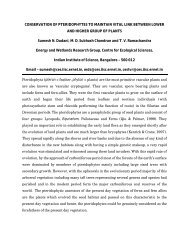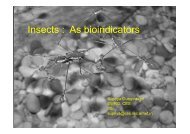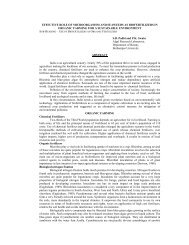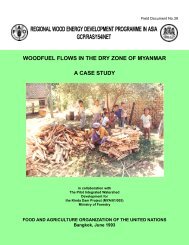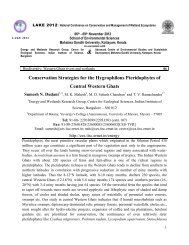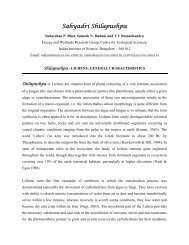a brief comp a brief comparison of modern pteridophyte arison of ...
a brief comp a brief comparison of modern pteridophyte arison of ...
a brief comp a brief comparison of modern pteridophyte arison of ...
You also want an ePaper? Increase the reach of your titles
YUMPU automatically turns print PDFs into web optimized ePapers that Google loves.
110 Indian Fern Journal Volume XXVI (2009)<br />
Thelypteris, but has not lost sight <strong>of</strong> Holttum’s properly extrapolated groups within it, as<br />
subgenera and sections. It is important for a major rank like a genus to have a useful,<br />
practicality and to be readily recognisable, yet the sections etc. within it can still be properly<br />
recognised, but at the lower rank, not affecting the binomial nomenclature we are all obliged<br />
to use. Ask a pteridologist to define (or even recognise) a Metathelypteris and they will<br />
usually be stumped, but ask them to do the same for a Thelypteris, in the present sense, and<br />
it will be relatively easy. Hymenophyllaceous "genera" and several <strong>of</strong> Ching’s Polypodiaceous<br />
ones are other examples <strong>of</strong> the inappropriateness and problem created by treating relatively<br />
more minor species-groups as genera. Of course one could say it would be easier, then, to<br />
let us call them all one genus per family, but that would be to ignore the evident and readily<br />
recognisable differences between the <strong>modern</strong> genera!<br />
Following the seminal work <strong>of</strong> Manton (1950) there was a large build-up <strong>of</strong><br />
cytological data concerning genera, begun by Manton & Sledge (1954). As a result Alston<br />
(1956) and Mehra (1961) were the first workers to attempt to make a cytological scheme <strong>of</strong><br />
generic and family classification. This was attempted by Lovis (1977) on a wider and more<br />
detailed scale, and much subsequent work has been added to it since then, including further<br />
understanding <strong>of</strong> the variability and significance <strong>of</strong> morphological features, group-by-group.<br />
Kato (1983) thus produced a more conservative classification reducing the number <strong>of</strong> families<br />
and genera. A new approach therefore began to emerge where families and genera were<br />
rationalised into more major and recognisable units. Small genera believed to be<br />
systematically related, were sunk into more major ones to become more recognisable and<br />
meaningful. Kramer & Green’s (1990) and their co-authors’ great work on the classification<br />
<strong>of</strong> Pteridophytes in Kubitski’s, The Families and Genera <strong>of</strong> Vascular Plants, definitively<br />
introduced "the big sink" and was a work <strong>of</strong> considerable courage, based on very thorough<br />
and experienced international collaborative work from many leading authorities. Once names<br />
are in existence at generic etc. rank, everyone generally likes to use them in their new<br />
publications, to keep up with research-developments and increase the number <strong>of</strong> taxa. But it<br />
requires a more thorough knowledge on a wider scale to sink genera as they did. Thus from<br />
Pichi Sermolli’s 443 genera, they reduced it to 223, more fundamental genera and if all<br />
Ching’s genera are also added to Pichi Sermolli’s there used to be a total <strong>of</strong> 469 erstwhile<br />
genera. Pichi Sermolli’s 64 families (plus Ching’s extra 14 families) were reduced to 38<br />
families. The resulting genera and families are not merely thrown-together chimaeras <strong>of</strong><br />
unrelated groups, but genuinely show their systematic relationships through their common<br />
morphology.<br />
On the whole the Kramer & Green system generally began to be widely accepted<br />
and at last introduced an unprecedented degree <strong>of</strong> agreement and uniformity in classifications<br />
world-wide. Unfortunately though, some areas <strong>of</strong> the world have taken a long time to bring<br />
it to notice due to isolation combined with lack <strong>of</strong> funding for acquiring <strong>modern</strong> literature,<br />
thus leaving somewhat <strong>of</strong> a gap in the development <strong>of</strong> understanding <strong>of</strong> families and genera.





